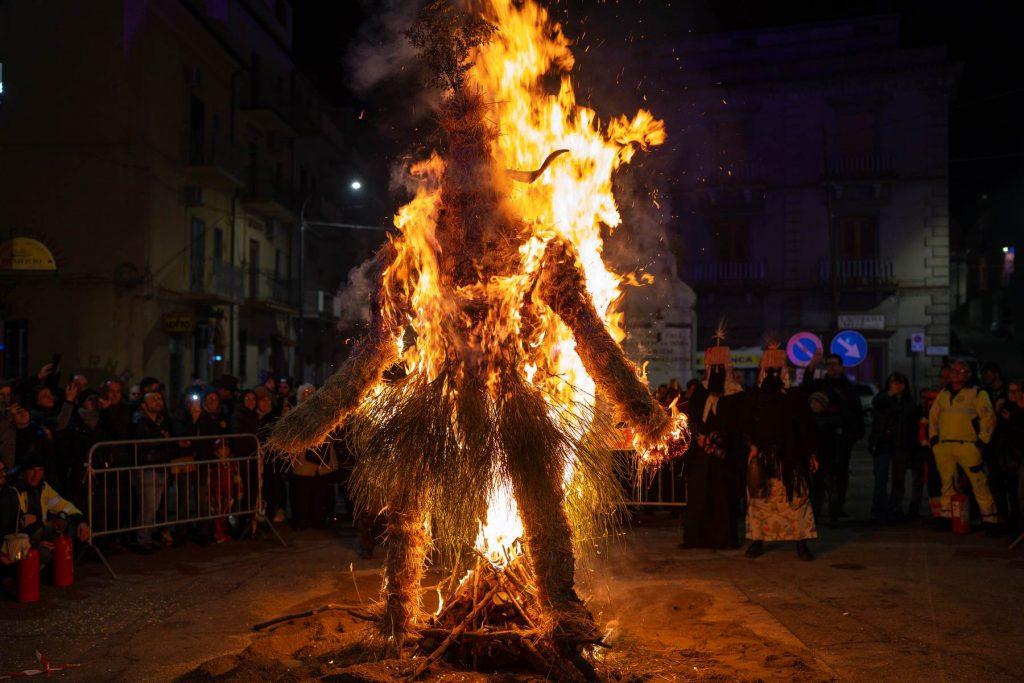Article by Casa Netural
In Roman religion, every place inhabited and frequented by humans is characterized by the presence of a supernatural entity: the Genius loci.
The Genius loci, the spirit of the place, brings together all the meanings that can be attributed to a specific location. In more recent times, the term has been taken up by architects and sociologists to refer to the socio-cultural aspects and relationships established between humans and the environment in a bounded space (e.g., a town or village).
In this article we go through two different case studies from southern Italy: the village Grottole with the clay-making tradition re-discovered by the non-profit Wonder Grottole and the village of Stigliano, where a collaboration between local organizations and festival, together with the artist DEM Demonio is Is reviving ancient carnival traditions.
Every place is different in geography, history, and culture; telling stories about local specificities reinforces its identity and creates a sense of belonging. This is true both for the community that inhabits that place, which gathers around shared traditions and customs; and for those who come from outside and somewhat bewildered discover a different way of inhabiting a place.
Stories about how humans have adapted to living in certain environmental contexts are passed down to pass on to future generations specific knowledge for living in the local context. In contemporary terms, one can refer to Local Ecological Knowledge, the knowledge, practices and beliefs about ecological relationships acquired through personal observation and interaction with local ecosystems and shared by local resource users.
In Grottole, in the Matera hills, Local Ecological Knowledge is expressed, for example, through the tradition of clay making. Clay, which historically was taken from the gullies near the Basento River, was abundant and being harvested only from the most superficial layers did not lead to intensive resource exploitation. The same water, needed to work the clay, abounded near the river, and the kilns to bake the clay were fed with dry wood collected during the year in the same area, which was rich in bushes and Mediterranean scrub.
The transmission of this land-related knowledge has been compromised by the industrial revolution and the standardization of production processes and raw materials. So today, even in Grottole, the clay that is used by the last potter is imported from Tuscany and the products he makes are souvenirs to sell to tourists or works of art; having lost the need to use terracotta tools in everyday life. Can one imagine a way to preserve these traditions in the contemporary? Can Grottole clay become part of a quality and sustainable local circular supply chain? Can products be generated that still embody the genius loci but adapt to contemporary use and desire?
The importance of continuing to tell stories related to territories also concerns local culture and folk traditions. In Stigliano, for example, in the mountains of Matera, the AppARTEngo public art festival led artist DEM Demonio to work on bringing to light two ancient carnival masks decades apart.
After an in-depth study and discussion with scholar Mimmo Cecere, author of the book “La Spiga e il Caprone – Antiche maschere antropologiche stiglianesi,” the artist initiated a project that involved the local community. During an artist residency, DEM made the masks of the Wheat Ear and the Zimmaro using natural materials. Recovering traditional carnivals and festivals makes it possible to recover a part of traditional culture, which was almost completely abandoned at the end of the last century, and could now bring the Stigliano carnival to be part of the Network of Basilicata Carnivals.
What has been done in Stigliano with DEM’s contribution is only the beginning of a path that, through the rediscovery of the masks of Zimmaro and Spiga, in the artist’s will, wants to lead to a passing of the baton with the new generations, who will carry on the tradition by strengthening the local identity and creating a new attractiveness for the area and that may lead these masks to tour other historical carnivals in Italy and abroad generating bridges and making people rediscover an archaic fascination linked to nature and its cycles.
This activity is not only related to the carnival, but it means to set in motion a whole part of the community, to celebrate a ritual again, to increase their awareness and regain their identity, stimulates the development of new skills for different subjects, brings them to be together in a new way, generates opportunities to connect with other people and creates new models of development starting from a new management of their heritage.
Photographs by: Cristina Carbonara
We thank DEM for telling us about his work.




 Co-funded by the Erasmus+ Programme of the European Union
Co-funded by the Erasmus+ Programme of the European Union